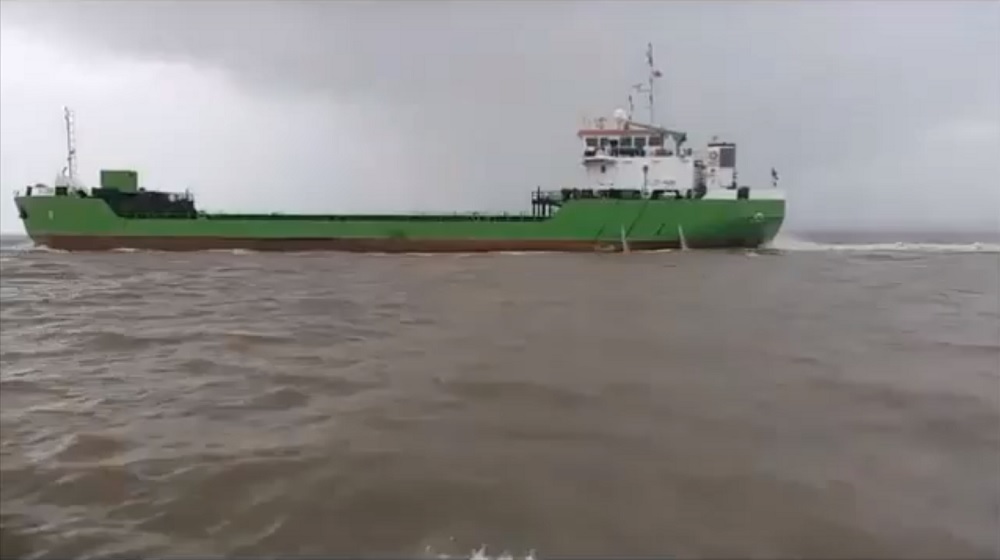Report raises concerns over 2018 Hinkley C mud dump off Cardiff Bay

A report published today, has expressed concern over the decision in 2018 that allowed sediment from the construction of the Hinkley C nuclear power station to be dumped in the sea off Cardiff but rejected calls for additional testing to detect plutonium particles in the mud.
Despite public opposition, EDF Energy, the company building the new plant on the site of the decommissioned Hinkley Point A plant, was given permission to dump 300,000 tonnes of mud in the Cardiff Grounds, two miles off Cardiff Bay just over two years ago.
Eventually EDF disposed of just 120,000 tonnes of mud but last year submitted a new application to dump a further 780,000 tonnes in the same location.
The report from the Hinkley Point group, which was set up by First Minister Mark Drakeford to advise the Welsh Government on the impact of the new power station in Somerset, presents modelling results which show dumped mud disperses down past Barry, not upstream toward Newport as Natural Resources Wales’ (NRW) advisors the Centre for Environment, Fisheries and Aquaculture Science (CEFAS) claim.
As a result, the group recommends independent studies “review the suitability of Cardiff Grounds as a marine disposal site before any further licences are granted for Hinkley mud.”
The Hinkley group is also strongly critical of the design of the nuclear power stations’ cooling water project as approved in 2013.
Mud being dumped in the Cardiff grounds has been removed as part of the construction of the controversial the seawater direct intake system that the report observes, “is no longer used in other countries due to the damaging impact it has on fish populations.”
Initially the operator proposed the use of an acoustic deterrent system to reduce the number of fish being killed by the cooling system but in 2017 abandoned the plans without suggesting any alternative.
Currently the plant’s proposed Fish Recovery and Return System consists of a 5mm mesh barrier set up in the water intake tunnel to stop large fish from being sucked in while another channel will divert fish, dead or alive, back out to sea.
Last year the Sunday Times reported that marine and conservation groups estimated that this system will kill 250,000 fish a day and called for it to be altered or scrapped. EDF said the FRR will kills an estimated 650,00 fish a year.
Ecosystem
Describing the report as “wide-ranging”, Mr Drakeford said: “It addresses the effect of the development on the Severn Estuary ecosystem and on the health of fish species; the Cardiff Grounds and the arrangements for marine dredging and disposal; emergency and contingency planning arrangements; and the relationship between regulatory and planning regimes in Wales and England.
“This report is a valuable source of evidence and advice. It highlights the importance of considering major projects through the lens of the Well-being Future Generations Act. It reminds us of the economic and environmental importance of the Severn Estuary and it will make a substantial contribution to our work in relation to both.”
Cian Ciaran from the Geiger Bay coalition said the group behind the report: “… point out the Welsh National Marine Plan requires projects to ‘avoid adverse impacts on individual Marine Protected Areas (MPAs)’; a tough test that mud-dumping in the Severn Estuary would surely fail.
“They are also concerned that the Welsh requirements of the Well-being of Future Generations (Wales) Act and the Environment (Wales) Act are taken fully into consideration, though they avoid saying NRW has been disregarding this law.”
Suitable
The new report, however doesn’t support the scientific evidence produced by Geiger Bay of the presence of nuclear microparticles containing plutonium in the mud. It claims these particles would have been detected via the gamma spectroscopy previously carried out on mud samples from the site and concludes “from a radiological perspective, the sediments that were dredged in 2018 were suitable for disposal at sea according to the London Convention & Protocol,” adding, “The Group would expect therefore that from a radiological perspective, the sediments that are planned to be dredged in 2021 would be deemed suitable for disposal at sea according to the London Convention & Protocol.”
Geiger Bay rejects this conclusion. Max Wallis from Friends of the Earth Barry & Vale, part of the coalition, said: “That’s wrong as the gamma technique failed to detect any but larger “hot” nuclear particles on Dounreay beaches. Hinkley’s microparticles being 1000 smaller are detectable only by the CR-39 technique developed at Bristol University.”
The Geiger Bay coalition also welcomed the Senedd’s Petitions Committee decision this morning rejecting a move to close the Hinkley-mud Petition, deciding instead to carry it forward to the new Senedd following May’s election.
The committee also agreed a proposal by Neil McEvoy MS, to write to Natural Resources Wales reiterating the points raised by campaigners on what a full Environmental Impact Assessment (EIA) should entail.

Support our Nation today
For the price of a cup of coffee a month you can help us create an independent, not-for-profit, national news service for the people of Wales, by the people of Wales.




